|
Opening Surveys
Schipkov: Dutch Defence A97
1.d4 f5 2.c4 Nf6 3.Nf3 e6 4.g3 Be7 5.Bg2 0-0 6.0-0 d6 7.Nc3 Qe8 8.Re1
|
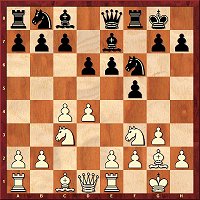
|
|
With the rook move White is aiming for a quick e2-e4, which is
considered advantageous if he manages it. But Boris Schipkov
points out that Black does worse trying to prevent the advance but
that in the main variation (8...Qg6) he gradually equalises.
|
Prié: Scandinavian Defence B01
1.e4 d5 2.exd5 Qxd5 3.Nc3 Qa5 4.d4 Nf6 5.Nf3 Bf5 6.Bc4 c6 7.Bd2
|
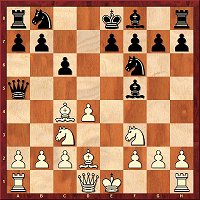
|
|
The article is devoted to the main variation of the
Scandinavian. Here Black is under pressure, but Eric Prié shows
that precise play will help him keep things level. As usual, Prié’s
contribution contains many of his own games.
|
Kritz: Sicilian Defence B42
1.e4 c5 2.Nf3 e6 3.d4 cxd4 4.Nxd4 a6 5.Bd3 g6 6.0-0 Bg7 7.Nb3
|
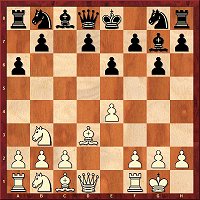
|
|
Black’s setup is not bad, if ...Nge7 and ...d5 could be played. So according to Leonid Kritz White should try to counter this advance, starting with 7.Nb3 and continuing after 7...Nge7 with 8.c4 and then Nc3.
|
Breder: French Defence C07
1.e4 e6 2.d4 d5 3.Nd2 c5 4.cxd5 Qxd5 5.N1f3 cxd4 6.Bc4 Qd6 7.0-0 Nf6 8.Nb3 Nc6 9.Nbxd4 Nxd4 10.Nxd4 a6 11.Re1 Bd7
|
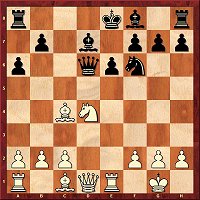
|
|
Black is now ready to castle long, but is still able to castle to the other side after ...Qc7, ...Bd6. The lines are sometimes very sharp, but of Black knows them well he should be able to do OK.
|
Breutigam: Tarrasch Defence D34
1.d4 d5 2.c4 e6 3.Nc3 c5 4.cxd5 exd5 5.Nf3 Nc6 6.g3 Nf6 7.Bg2 Be7 8.0-0 0-0 9.Bg5 cxd4 10.Nxd4 h6
|
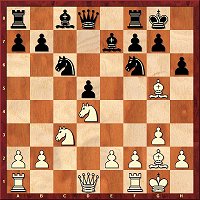
|
|
In his contribution Martin Breutigam shows that Black has no
need to fear the main variation of the Tarrasch Defence. Perhaps
this opening is being avoided purely for reasons of fashion, but
objectively the positions which arise from it are level.
|
Krasenkow: Semi-Slav D46
1.d4 d5 2.c4 c6 3.Nf3 Nf6 4.Nc3 e6 5.e3 Nbd7 6.Qc2 Bd6 7.Bd3 0-0 8.0-0 dxc4 9.Bxc4 b5
|
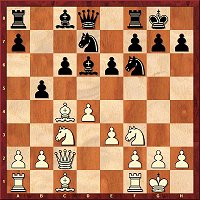
|
|
Compared to 9...a6, which was investigated in CBM 142, the move
9...b5 is more direct and sharper. White is well able to prepare
himself for Black’s plan, which involves a rapid c6-c5.
Nevertheless, according to the analyses of Michal Krasenkow he
cannot count on having an opening advantage.
|
Stohl: Grünfeld Defence D85
1.d4 Nf6 2.c4 g6 3.Nc3 d5 4.cxd5 Nxd5 5.e4 Nxc3 6.bxc3 Bg7 7.Be3 c5
|
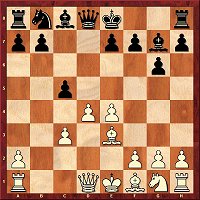
|
|
Kramnik has several times been successful with the move 7.Be3,
a good reason for Igor Stohl to take a much closer look at the
variation. After 7...c5 the Slovakian grandmaster analyses both
8.Rc1 and also 8.Qd2.
|
Kuzmin: Grünfeld Defence D90
1.Nf3 Nf6 2.c4 g6 3.Nc3 d5 4.cxd5 Nxd5 5.Qb3 Nb6 6.d4 Bg7 7.Bg5
|
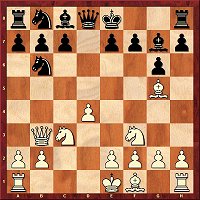
|
|
This is a Grünfeld Defence position and it is also often reached as follows: 1.d4 Nf6 2.c4 g6 3.Nc3 d5 4.Nf3 Bg7 5.cxd5 Nxd5 6.Qb3 Nb6 7.Bg5. But these are not games by stronger players, since they would continue differently, with 6...Nxc3!.
|
Skembris: Queen's Indian E10
1.d4 Nf6 2.c4 e6 3.Nf3 a6
|
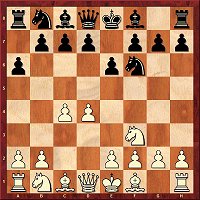
|
|
The move of the rook pawn gets White out of well-trodden paths. After 4.Nc3
c5 there are several possible transpositions, e.g. 5.e4 to the
Sicilian, 5.g3 to the English. White has to play 5.d5 if he wants
to cast any doubt on Black’s plan.
|
Marin: Queen's Indian E16
1.d4 Nf6 2.c4 e6 3.Nf3 b6 4.g3 Bb7 5.Bg2 Bb4+ 6.Bd2 Bxd2+ 7.Qxd2 0-0
|
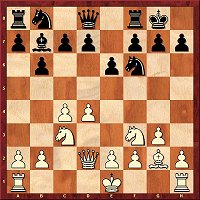
|
|
The first question is whether White actually gains any advantage in the Monticelli trap 8.Nc3 Ne4 9.Qd3 Nxc3 10.Ng5. If he does, how should the variation with 8.Nc3 d6 9.0-0 Ne4 be evaluated? Mihail Marin meticulously explores the answers.
|
Postny: King's Indian E94
1.d4 Nf6 2.c4 g6 3.Nc3 Bg7 4.e4 d6 5.Nf3 0-0 6.Be2 e5 7.0-0 exd4 8.Nxd4 Re8 9.f3 c6 10.Kh1 Nbd7
|

|
|
The early capture on d4 is probably better than its reputation.
The recent game Kramnik-Ponomariov, Dortmund 2011 plays an
important part in the article. In it the Russian played 11.Be3 instead of the far more common 11.Bg5.
|
|